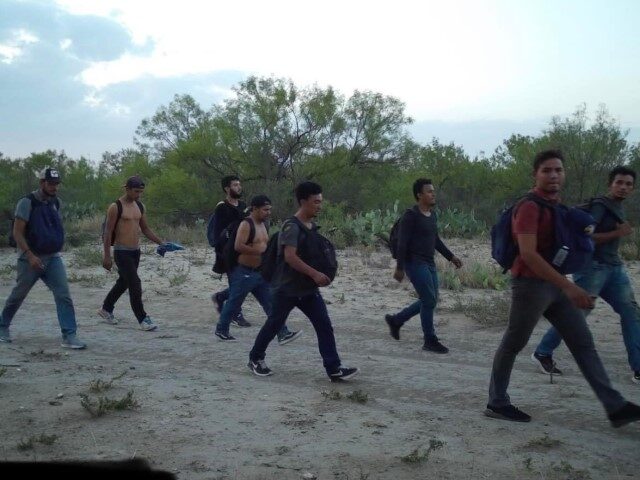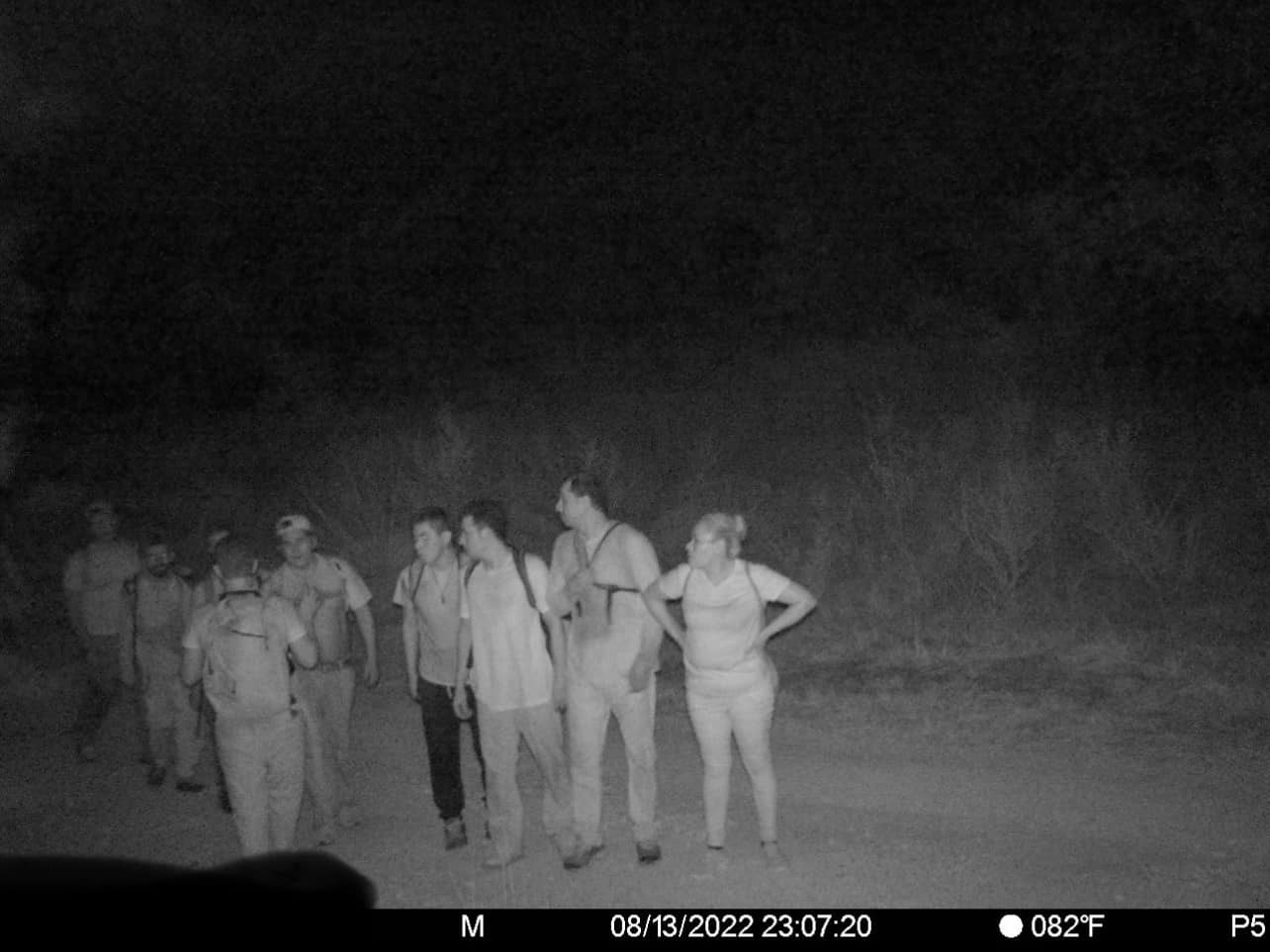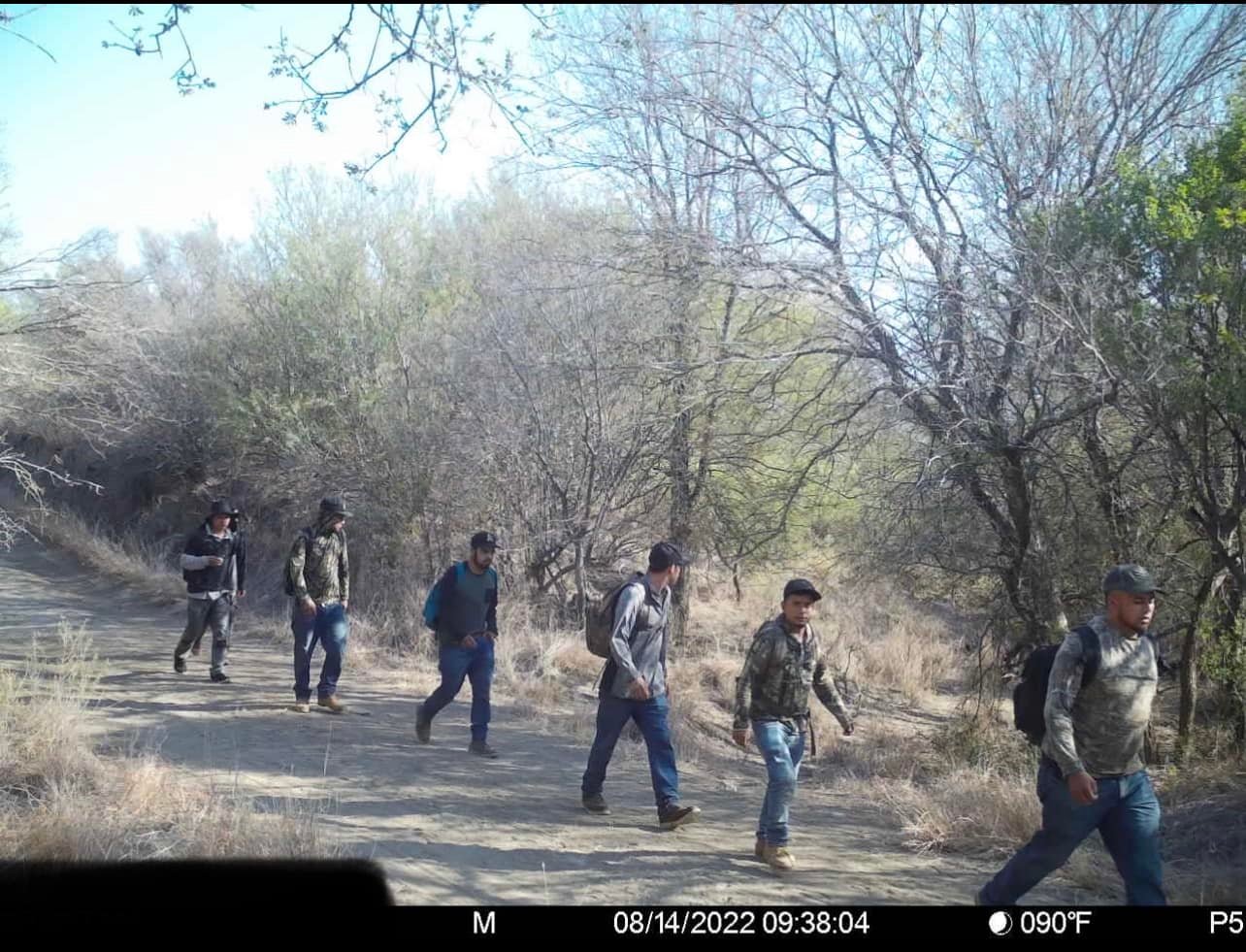EAGLE PASS, Texas — For one Texas ranch manager, dealing with the daily trespasses of migrants through the property is becoming almost unbearable. Ben Binnion has managed ranches near the border area for a decade. He explained to Breitbart Texas how 2022 is far worse than normal.
The ranch Binnion manages is 15 miles from the Rio Grande, but the distance is no barrier to the hundreds of migrants moving through on a weekly basis. Migrants traverse the property in hopes of avoiding a nearby Border Patrol highway checkpoint. He described to Breitbart Texas the impacts to the land and ranch operation left behind.
To document the traffic, Binnion installed cameras usually intended for monitoring wild game. Photos depict more than 100 groups crossing the ranch in the first few weeks of August. He frequently posts the images on social media platforms to generally raise awareness.
The migrant groups range from small parties to several dozen in number. The high summer temperatures have contributed to multiple medical emergencies and migrant deaths on the property this summer.
Binnion praised the efforts of the few Border Patrol agents able to respond to at least seven distress calls per day. “The agents on the ranch will work to apprehend the groups when they are not answering 911 emergency calls, but they are so overwhelmed by the volume and they can’t chase them all,” he said. Ben says 19 deceased migrants have been discovered on the property since January. “We usually see three at the most during a normal year.”
Border Patrol routinely enters the ranch to respond to distress calls, but the contingent of available agents is too small to pursue every group. “Although the Border Patrol manages to apprehend nearly 75 migrants on three to four nights of the week, most of the groups manage to escape,” he says.
The constant movement of migrants through the ranch is problematic in ways that negatively impact the economic viability of the agricultural operations. While a severe drought made livestock less profitable, damages to fences caused by the constant flow of migrants makes the prospect of a livestock operation nearly impossible. “We have over 40 miles of perimeter ranch fence, if I tried to run livestock on the property right now, 38 miles would need to be replaced,” Binnion said.
Ben says ranch fences are cut or damaged in at least seven locations nightly. The expense to restore fencing to a functional status would cost nearly $600,000, assuming no migrant cuts the fence the next day.
The ranch hosts wild game hunts as a source of income. Those operations have also suffered. Nearly 40 percent of seasonal hunts are impacted by migrants moving between blinds and feeders – spooking game and creating a human hazard for sportsmen. The migrants pose a liability to the ranch should any be accidentally shot during hunts.
The ranch gives as much security for the hunters as possible, but they are also provided with bear spray canisters as a non-lethal method to protect themselves if the need arises. The ranch has dealt with property theft and ranch house break-ins. Binnion reminds hunters to lock all vehicles and remove keys. Hunters are reminded to secure all firearms to avoid theft.
On Wednesday, Ben says he discovered one of the ranch’s all-terrain vehicles loaded with expensive tools and an ice chest filled with meat from one of the houses.
The garbage left in the wake of migrant traffic has been problematic as well. “We try to pick up as much as we can but only have time to gather what we can see on the roadways throughout the ranch, there are tons left behind that we will have to deal with that we cannot get to.”
Binnion says during a normal year, the ranch generates 1 ton of garbage every three months. The contents are transported to a landfill for weighing and billing. More recently, the freight increased to 3 tons per month. The bulk, according to Ben, are clothing, plastics, and other litter left by migrants.
“This is unsustainable and dangerous for everyone involved,” Ben emphasized.
Randy Clark is a 32-year veteran of the United States Border Patrol. Prior to his retirement, he served as the Division Chief for Law Enforcement Operations, directing operations for nine Border Patrol Stations within the Del Rio, Texas, Sector. Follow him on Twitter @RandyClarkBBTX.



COMMENTS
Please let us know if you're having issues with commenting.